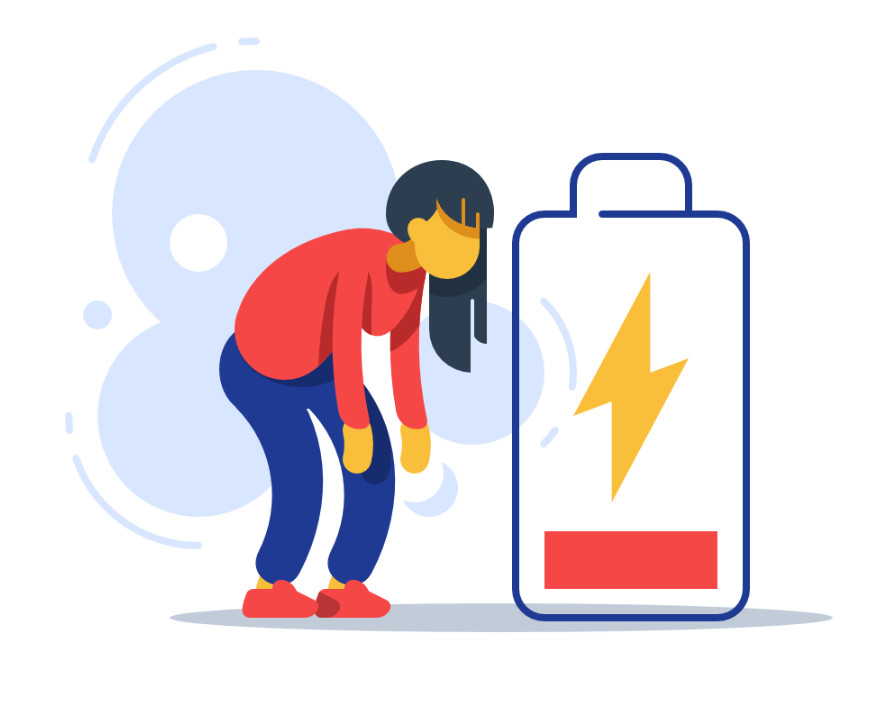Burnout is a real threat to many SMEs but there is a lot that can be done to reduce the risk.
The World Heath Organisation defined Burnout in 2019 as an Occupational phenomenon1. Like a cold or flu, burnout doesn’t hit all at once. Psychologists Herbert Freudenberger and Gail North outlined 12 phases of this syndrome2. The first being excessive drive or ambition which pushes people to work more and work harder. Personality type can also mean some are more predisposed ‘ the need to be in control and being a perfectionist, for example can increase the risk of burnout.
The ongoing impact of Covid-19 sees an increased risk of employees suffering burnout. More people have moved to working remotely and may not return to a full-time office environment and this has meant the lines between work and life have become blurred. Anxiety levels have risen, there is concern over the risk of redundancy and this has triggered overworking and additional stress.
Recognising the risk of burnout is the first step in addressing it. That might be recognising the risk in ourselves, or it might be recognising it in someone else, who we may be able to support.
Signs of burnout include physical symptoms such as heartburn, gastrointestinal issues, plus a potential increase in alcohol, drug, or food misuse, mental exhaustion, escape fantasies, pessimistic outlook, or not feeling yourself.
It can also mean a lack or reduced levels of motivation and disillusionment, depersonalisation, increased frustration, negativism or cynicism plus irritability and resentment.
It’s also important to be aware of lower levels of concentration, being easily distracted so working increased hours but with less being achieved and increased errors, loss of meaning in work, obsession over problems, and presenteeism.
What SMEs can do to reduce the risk
The good news is, there is a lot that SMEs can do to reduce the risk.
Identify work-related stressors
When a person is not in control of how a job is carried out or is asked to complete tasks that conflict with their sense of self this can cause burnout. Poor communication, ambiguity, unrealistic expectations and IT issues can also contribute.
Encourage open and honest conversations
Regular communication helps create a sense of belonging and builds a strong social purpose, especially when seeking opinion and acting on feedback. This is especially important with a disparate workforce, with many now working from home.
Lead by example, creating the right culture
Workplace culture is so important when looking at burnout and unless managers and business leaders demonstrate the values they want to see from employees, the company risks continuing to drive unhealthy practices.
Make work-life balance a priority
Health of the Workplace research showed that before Covid-19, many employees struggled to juggle work and home life. The pandemic added extra complexity ‘ particularly for those working from home while looking after family members. It is so important for everyone, managers included, to look after themselves.
Review HR policies
SMEs can empower line managers and staff with the tools and skills to identify signs of burnout, adopt coping mechanisms and encourage a healthy, happy working environment, whether in the home, office, workshop or warehouse. Policies will support this in a more formal manner.
Signpost to support
Many employees will remain at work whilst suffering with burnout.
Remember to remind employees of support available to them, whether it’s online training courses to help them better manage their time, help to improve their wellbeing or access to medical expertise like counselling services. SMEs can offer access to benefits and services that can help .
This can include virtual GPs ‘ available standalone or increasingly included as standard within health and protection benefits, online mental health counselling support services, stress intervention and management support.
Mood-tracking apps, health education apps and online/remote health assessments and screening options are available. Wellbeing and lifestyle guidance, webinars and workshops and mental health first aid training and support can also be helpful.
76% of workers in a US study said they had experienced burnout3, so awareness is absolutely key. Managers need to look out for the signs in themselves and in others. Be especially aware of line managers as they are a crucial link between the employees and business leaders but may also be particularly prone to burn out. Ensure good, regular communication within the business with robust policies and signposting to the support available.
2 https://www.theburnoutgamble.com/blog/the-12-stages-of-burnout
“
Share via:








































